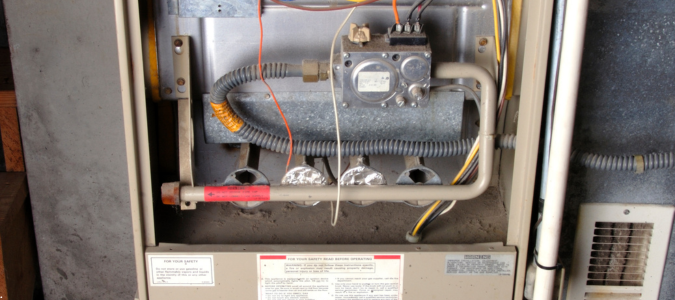Homeowners rely on their heaters to keep their homes comfortable during the cold. Unfortunately, heaters can stop working out of nowhere, leaving you wondering what went wrong. The good news is that there are several ways to troubleshoot heating issues. However, it’s important to understand that all major heating system repairs should be left up to professionals. Your heater serves a vital purpose in your home and deserves the best care to ensure its longevity. If you can’t figure out why your heater isn’t turning on, contact a local HVAC repair service to inspect your system.
Heater Is Not Turning On: Troubleshooting Tips
There are several potential reasons why your heater is not turning on. Most of them are simple fixes that homeowners can troubleshoot on their own. However, if fixing the following issues doesn’t resolve the issue, you should contact an HVAC expert to inspect your system. These steps include:
- Check your thermostat settings
- Set your thermostat higher
- Verify that the furnace power switch is turned on
- Check the circuit breaker
- Inspect and replace your air filter
Let’s dive into each of these a bit more.
Check Your Thermostat Settings
The first place to start is making sure your thermostat is turned to “heat.” While it may seem obvious, it’s easy for thermostat buttons to get bumped and accidentally turned off.
If you have a battery-operated thermostat, try replacing the batteries. Weak battery power can prevent the device from communicating with your furnace.
Set Your Thermostat Higher
If your thermostat is on the right settings and has enough battery power, try setting the temperature higher. It must be set higher than the indoor temperature for the heat to turn on. Start by increasing the heat a few degrees at a time to see if your system responds.
Verify That The Furnace Power Switch is Turned On
If you haven’t used your furnace in a while, one possibility is that the power switch is set to off. The furnace power switch looks like a standard light switch, and it’s typically on the side of your furnace or on the wall nearby. Make sure it’s turned to the “on” setting before you run your heater. Note that after turning it on again, your furnace may smell like it’s burning.
Check the Circuit Breaker
If the furnace power switch doesn’t respond after you turn it on, it may have been tripped. Go to your electrical panel and reset the circuit breaker for the furnace. It should be labeled “furnace” or “HVAC.”
The breaker may be between the on and off settings. To reset it, toggle it fully to the off position and then move it back to the on position. If the circuit continues to trip, you could have a bigger electrical issue on your hands and should consult with an HVAC specialist.
Inspect and Replace Your Air Filter
Old, dirty and clogged air filters can restrict airflow to the point that it causes your system to shut down as a safety response. This is a good thing as it prevents damage to your system and keeps you safe. Luckily, replacing your air filter is an easy fix.
The general rule is to replace your air filters every three months. If you have pets or excessive dust, you may need to replace it more often.
Additional Problems That Require Professional Intervention
If the above fixes don’t turn your furnace on, you may have a more significant problem on your hands, such as pilot light failure, faulty wiring or blower motor issues. These issues require professional intervention and should not be handled by homeowners.
Contact a local HVAC service to inspect your furnace and get to the bottom of why it isn’t turning on. An expert can also advise you on routine maintenance to ensure the longevity of your system and potential signs that you need a new furnace.
Can a Blown Fuse Cause a Heater Not to Work?
A blown fuse can cause your heater not to work. While it may seem like a small issue, blown fuses can have a significant impact on your HVAC system.
The reason why blown fuses are a serious issue is that they disrupt the electrical circuit. When part of the system is faulty, such as the thermostat, blower motor or ignition system, the fuse can blow and cut off power to your furnace.
Electricity can’t reach your furnace when a fuse is blown, which causes your heating system to stop working.
Signs of a blown fuse can include:
- Your heater is not turning on
- An unresponsive thermostat
- A recent power surge or outage
- Other appliances on the same circuit not working
If you suspect a blown fuse is the cause of your heater not working, contact an HVAC service to inspect your system and determine the root of the problem.
An expert will confirm if a fuse is blown, identify the reason, repair the damage and get your system running again.
Why Does My Furnace Have No Power?
If your furnace has no power, there are three things you can try before calling in the experts.
First, locate your electrical panel and find the breaker labeled “Furnace” or “HVAC.” The breaker may have tripped, which means it switched to the middle or off position. If this is the case, flip it off completely before putting it back to the on position. This is the most common reason that furnaces lose power, but it is an easy fix.
The second reason why your furnace doesn’t have power could be that the furnace power switch is flipped off. Furnaces have power switches that look like light switches and must be turned on to keep the furnace running. The switch is typically on the side of the furnace or attached to a wall nearby.
It’s possible that the furnace power switch was accidentally flipped off or during routine maintenance. Flipping it back on should bring power back to the furnace.
If that doesn’t work, the third reason could be due to your thermostat settings. Make sure your thermostat is set to heat and the temperature is higher than the temperature of your home. Otherwise, the furnace will not kick on when the temperature drops.
These are the simplest and most common reasons that furnaces don’t have power. However, if none of these solutions work, there could be a more serious problem going on. For example, you could have a faulty circuit breaker, a blown fuse, damaged wiring or a malfunctioning thermostat.
If you’re unable to resolve the issue yourself, contact an experienced HVAC specialist. An expert will diagnose the problem, identify the root cause and conduct the necessary repairs to get your furnace up and running again.
What to Do If Your Heater Is Broken?
How do you know when it’s time to replace your heater versus repairing it? There are several signs of a broken heater that should raise red flags. The first one is inconsistent heating. If one room feels like a sauna and another feels like a freezer, your heater is struggling to evenly heat your entire home.
Next, strange noises, such as rattling, banging and whining sounds, aren’t normal and should be addressed. An expert can tell you if a repair is possible or if it’s better to replace the entire heating system.
Another sign is if your heating bills start rising dramatically despite not changing your heating habits. If your heater is broken and struggling to keep up, it will have to work harder to produce the same amount of heat as usual, which can spike your utility bill.
If your heater requires frequent repairs and frequently breaks down, it’s likely time to replace it. While purchasing a new heater is an investment, you’ll save time, money and headaches in the long run.
Finally, a tell-tale sign that it’s time to replace your heater is its age. Heaters typically have a lifespan of 15 to 20 years. They’re more likely to break down or become inefficient around that age.
If you are unsure whether it’s time to replace your heater, contact an HVAC specialist to inspect your system and make a professional recommendation.
Keep Your Home Comfortable With Expert Help
Keeping your home warm in the winter is an important part of staying comfortable. The more you understand how your heating system works and the common issues that can cause it to not turn on, the better off you’ll be when cold weather comes.
The best way to avoid heating issues in your home is to stay proactive about heater maintenance and repairs. Before the winter months arrive, schedule a routine inspection with an HVAC service provider to ensure your system is in top shape.
A professional can diagnose any issues and determine the root cause of why your heater isn’t turning on.
ABC Can Make Your Home Comfortable Again
Whether you are concerned about strange noises coming from your heater or you’re looking for routine heating maintenance, ABC Home & Commercial Services can help. Our highly trained professionals know all the ins and outs of every make and model of heater and can offer you honest advice on what your best next steps are. And, for those heating problems that just can’t wait, like a heater that won’t turn on, we offer 24/7 emergency services.



